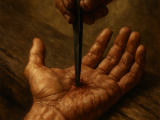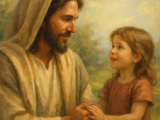The Fascinating History Behind the Translation of the Book of Mormon: A Tale of Revelation and Mystery


The translation of the Book of Mormon stands as a central event in the foundation of the Latter Day Saint movement, woven with elements of mysticism, deep faith, and the enigmatic practices of Joseph Smith. Among the most intriguing aspects of this translation is Smith’s use of a seer stone and a hat, a method that departs significantly from traditional notions of translation and highlights the mystical experiences underlying the early days of this religious movement.
The Seer Stone and the Hat
Joseph Smith’s translation process involved placing a small, brown seer stone into a hat, then pressing his face into the hat’s opening to block out light. This unconventional method facilitated what Smith described as the revelation of the Book of Mormon’s text, which he dictated to his scribes. This practice underscores the mystical experiences Smith reported and challenges conventional understanding of translation. The golden plates, which Smith claimed were the source of the Book of Mormon’s text, were often not in the same room during the translation process. Witnesses, including Smith’s wife, Emma, recounted that Smith did not read directly from the plates but rather from the visions produced by the stone in the hat.
Oliver Cowdery
Oliver Cowdery, Smith’s principal scribe, was deeply involved in the translation process, witnessing firsthand the use of the seer stone in the hat. Despite later conflicts and a temporary estrangement from the church, Cowdery’s early work with Smith cemented his place in Latter Day Saint history. His return to the church before his death in 1850 highlighted the lasting impact of his initial experiences with Smith and the Book of Mormon.
Martin Harris
Martin Harris, another key figure in the early church, provided financial backing for the publication of the Book of Mormon. Harris’s faith was tested by the unconventional translation process, yet he remained a staunch defender of the Book of Mormon’s divine origin, even after experiencing periods of doubt and separation from Smith. His journey reflects the complex relationship between faith, doubt, and personal conviction.
David Whitmer
David Whitmer, one of the Three Witnesses of the Book of Mormon, also witnessed the translation process. Like Harris, Whitmer maintained his testimony of the Book of Mormon despite his eventual estrangement from the church. Whitmer’s later years in Richmond, Missouri, were marked by his unwavering belief in the divine origin of the plates, a conviction that remained until his death in 1888.
Emma Smith
Emma Smith’s role as an early scribe and supporter of her husband during the translation of the Book of Mormon placed her at the heart of the movement’s foundational events. Her accounts provide valuable insights into the translation process, including the detail that the plates were not always present in the room. After Joseph’s death, Emma’s path diverged from the main body of Latter-day Saints, reflecting her complex legacy within the movement.
The translation of the Book of Mormon, with its mystical methods and the absence of the plates from the translation process, continues to fascinate and challenge both believers and scholars. This period in Latter Day Saint history is a testament to the complex interplay between faith, revelation, and the human experience, embodied by the individuals who were closest to Joseph Smith during these foundational moments. Their stories, marked by devotion, conflict, and reconciliation, underscore the enduring mystery and appeal of the Book of Mormon’s origins.










